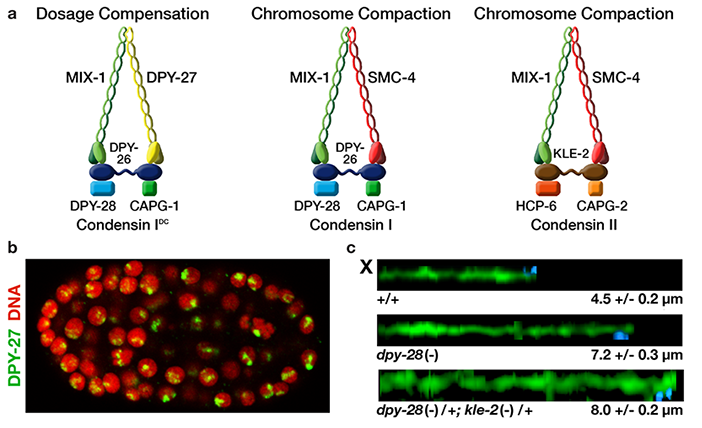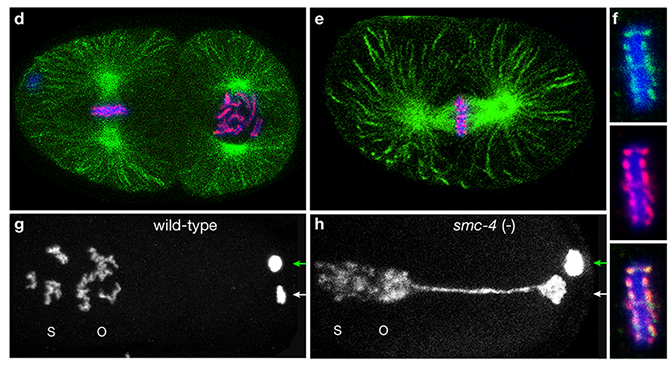Figure 3: Biochemically distinct condensin complexes with interchangeable
subunits control chromosome structure throughout C. elegans development.
a, Each condensin complex contains a pair of SMC proteins (Structural Maintenance of
Chromosomes) and three non-SMC subunits. SMC proteins have nucleotide binding
domains at their globular N- and C-termini, which are linked by two long coiled coil
domains separated by a hinge region. The dosage compensation condensin complex
(condensin IDC) specifically changes the molecular topology of interphase X chromosomes
in XX embryos to repress gene expression by half. b, An XX embryo co-stained with a DNA
dye and the DCC-specific subunit DPY-27 shows X-specific localization of the DCC.
Condensin I and II perform independent roles in the structure and segregation of mitotic
and meiotic chromosomes, with condensin II being the primary regulator of chromosome
compaction and resolution (see also h). Both condensin I and II affect the number and
distribution of double strand breaks in meiosis, and thereby the number and position of
crossovers between homologous chromosomes, by controlling the higher-order
chromosome structure. c, Confocal images show that mutations disrupting condensin I
and II subunits cause an additive extension of chromosome axes. Meiotic X-chromosome
axes from paired and synapsed homologs in pachytene nuclei of wild-type and
condensin-mutant gonads were stained with antibodies to the axial protein HTP-3, traced
in 3 dimensions, and computationally straightened. Axial length is shown.
Condensin II co-localizes with centromere proteins and mediates faithful chromosome
segregation. d, Two-celled, wild-type embryo stained with DNA dye (blue) and antibodies to
tubulin (green) and the centromere-specific histone HCP-3 (red). The cell on the left is in
metaphase of mitosis. e, One-celled, wild-type embryo in metaphase stained with DNA
dye (blue) and antibodies to tubulin (green) and the condensin II subunit SMC-4 (red). f,
Enlargement of mitotic chromosomes in metaphase co-stained with DNA dye (blue) and
antibodies to SMC-4 (green) and HCP-3 (red). The merged image (bottom) shows the
colocalization of centromere proteins and condensin II on the holocentric nematode
chromosomes. DNA-stained wild-type (g) and smc-4(-) (h) embryos after segregation of
homologs (polar body, green arrow) and sister chromatids (polar body, white arrow) and
migration and fusion of the sperm (s) and oocyte (o) pronuclei. In smc-4(-) embryos the
oocyte pronucleus remains connected to the sister chromatids in the polar body,
demonstrating improper chromosome segregation in meiosis. The dosage compensation
subunit MIX-1 is shared with condensin II and behaves similarly to SMC-4 in mitosis.


